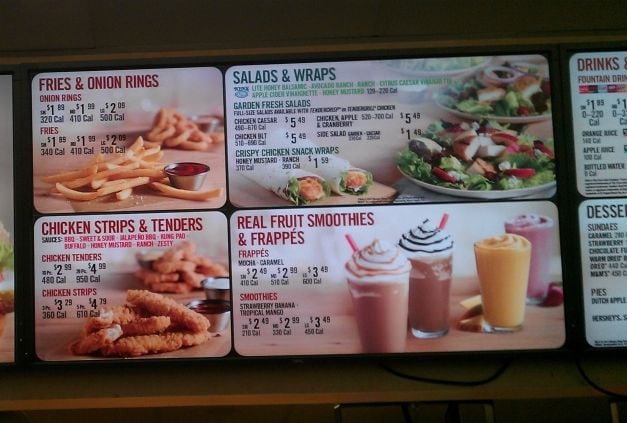‘The Influence of Calorie Labeling on Food Orders and Consumption: A Review of the Literature’, was published in the Journal of Community Health as restaurant chains with 20+ outlets roll out calorie information on menus as part of the Affordable Care Act.
The authors reviewed 31 studies published between January 2007 and July 2013 that explored how calorie labeling influenced consumer choices at cafes and restaurants (18 were conducted in ‘real world’ settings, and 13 were conducted in controlled laboratory settings).
While some studies showed that the calorie labels seemed to drive positive changes in behavior, others showed that diners paid little attention, they said.

“The best designed studies… [ie. those conducted in real-world conditions] show that calorie labels do not have the desired effect in reducing total calories ordered at the population level.”
It may be the case that calorie labeling alone is not sufficient to modify consumer behavior
Not surprisingly perhaps, women, residents of wealthier neighborhoods, and dieters paid the most attention to the calorie information, but overall, they stressed, “calorie labeling, as it is currently being implemented, has no impact on overall food purchases or consumption for the population as a whole.”
They added: “It may be the case that calorie labeling alone is not sufficient to modify consumer behavior in the desired direction. Other presentation formats—traffic lights, physical activity equivalents, healthy logos, color coding, and the like—show promise beyond calories and even beyond relaying nutrition information.

“Providing the daily calorie recommendation statement at the point of purchase may also improve the effectiveness of the policy.”
However, the authors acknowledged significant limitations to their review. First they only had a small number of studies to assess. Second, the methodologies in the studies were not consistent, making it hard to compare their findings. Third, several of the ‘laboratory conditions’ studies relied on hypothetical food selections (would subjects have made the same choices in the real world?).
Another important limitation was that the studies conducted in real world settings only looked at the number of calories ordered and purchased, and not what diners actually consumed (did they finish their plates?).
Familiarity with menus can be a barrier
Many theories have been posited as to why calorie data does not seem to be proving as effective as some policymakers hoped, with one factor - especially in big fast-food chains - being familiarity with the menus (why even look at the menu if you always order the same thing?), noted the authors.
In other cases, presentation might be a factor, with calorie information becoming lost on large menus, or presented in a confusing manner.
What the restaurant industry is doing
Speaking to FoodNavigator-USA last year, National Restaurant Association director of nutrition Joy Dubost, PhD RD CSSD, said that it was too early to determine the impact of calorie labeling on consumer behavior.

But it had made some members think more about what might be an appropriate portion size, she said, with a growing number of chains now highlighting entrees with fewer than 600 or 700 calories on menus, or creating ‘menus within a menu’ offering lighter fare.
“Smaller portions is actually a top trend on menus now, and many chains are offering a broader range of options and incorporating more produce into dishes, which typically reduces the calorie content.”
CSPI: Diners still have to exercise tremendous discipline to avoid exceeding daily calorie requirements when eating out
However, according to the Center for Science in the Public Interest, while most major chains now highlight ‘lighter’ options on menus, diners still have to exercise tremendous discipline to avoid exceeding daily recommendations on calories, fat, sugar and sodium for an entire day in a single sitting.
Speaking to this publication last year, CSPI director of nutrition policy Margo Wootan said that eating out can feel like “swimming upstream”, adding: “We need to totally rethink the way we eat out. It’s not an occasional treat anymore. For many people, it’s lunch every day, and maybe breakfast and dinner a few times a week.”
Source: Journal of Community Health DOI 10.1007/s10900-014-9876-0
‘The Influence of Calorie Labeling on Food Orders and Consumption: A Review of the Literature’
Authors: Kamila M. Kiszko, Olivia D. Martinez, Courtney Abrams, Brian Elbel
